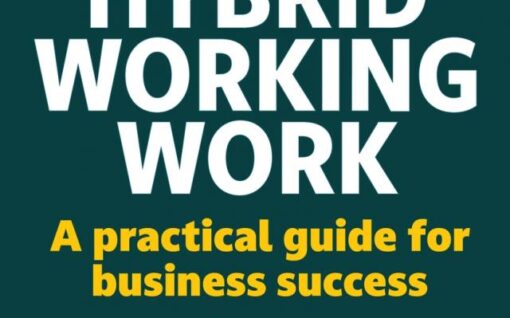Demonstrating value through thought leadership content
According to Statista, 50% of marketers expect to increase their content marketing budget this year.
So, as a marketer in L&D, HR or talent, how are you going to get more bang for your buck, especially in these economically straitened times? How are you going to create content that really works for you?
We know that creating brand awareness, building trust and credibility and educating audiences are the main drivers for investing in content marketing but do they provide the value and impact that the business is looking for?
You only have to look at the types of content being pushed out by vendors to see what content typically focuses on – the product, its features and its benefits to the customer. Is that what your audience really wants? The challenge is to create the right type of content that will grab your audience’s attention.
Research from Edelman and LinkedIn shows that thought leadership is the type of content that will cut through with buyers.
In their report, 2022 B2B Thought Leadership Impact Report – Breaking Through to Buyers in Economic Uncertainty, the authors state:
“Thought leadership is one of the most effective tools an organisation can use to demonstrate its value to customers during a tough economy – even more so than traditional advertising or product marketing, according to B2B buyers.”
The research of nearly 3,500 global business executives across a range of industries and company sizes, which is now in its fifth year, says that decision makers want thought leadership content to provide a strong, data-backed point of view. This, they say, can make a difference to who wins their business.
Three data points make the case for why your brand should consider creating thought leadership content:
- 61% of decision-makers say that an organisation’s thought leadership can be moderately or a lot more effective at demonstrating the potential value of its products/services compared to traditional product-oriented marketing.
- 50% of C-suite executives say that high-quality thought leadership has more impact on their purchase decision making during economic downturns than when times are good.
- 55% of decision-makers say that during an economic downturn, it is more important than ever for suppliers who do not offer products/services that are essential to operations to produce high-quality thought leadership if they want to win their business.
So what should you focus on when creating this type of content? The key is not to simply talk about trends affecting the industry. Your audience will be aware of these from other sources. Success comes from a laser focus on current trends that are affecting your audience, how they relate to your audience’s pain points and how what you offer helps overcome these challenges and leads to success in challenging times. Decision-makers expect thought leadership to:
- Identify new opportunities or industry trends stemming from the economic downturn (48%)
- Explain how the organization can help our business do well despite the economic downturn (44%)
- Give me information and insights that will make me more effective/successful in my job (44%)
- Demonstrate an understanding of our organization’s major pain points (43%).
The research shows that senior executives are also looking for easy to consume and accessible content that is supported by credible data, that challenges assumptions and that provides answers to their challenges. These are the factors that add value to thought leadership content:
- Make it quick and easy to consume and absorb (51%)
- Reference robust research and strong supporting data (49%)
- Offer provocative ideas that challenge people’s assumptions (48%)
- Offer concrete guidance on how to respond to the issues or opportunities discussed (45%).
In an interesting twist, the research reveals that many of the survey respondents work in organisations that produce thought leadership content. They expect it to keep their brand top of mind, even when clients or prospects cannot buy from them due to budget constraints, and they expect it to protect existing client relationships from leaving them (going stale? Faltering? – I don’t think relationships leave) . But, only 29% of C-suite executives believe that the overall quality of their content is very good or excellent.
Measurement is an issue here too – most respondents are measuring web traffic rather than linking content to business wins. Clearly, there is a lot of room for improvement here!
The research is a good reminder that high quality thought leadership content that is data-driven, credible, challenging and provides answers to problems will cut through with your audience. If your stakeholders need reminding of this, then share the research with them today (link below).
I’ll end with this quote from the research:
“Thought leadership is one of the most effective tools an organization can use to demonstrate its value to customers during a tough economy – even more so than traditional advertising or product marketing, according to B2B buyers.”
Download the research here.
And please get in touch if you need help planning and creating cut-through thought leadership content at team@insightsmedia.co.uk

